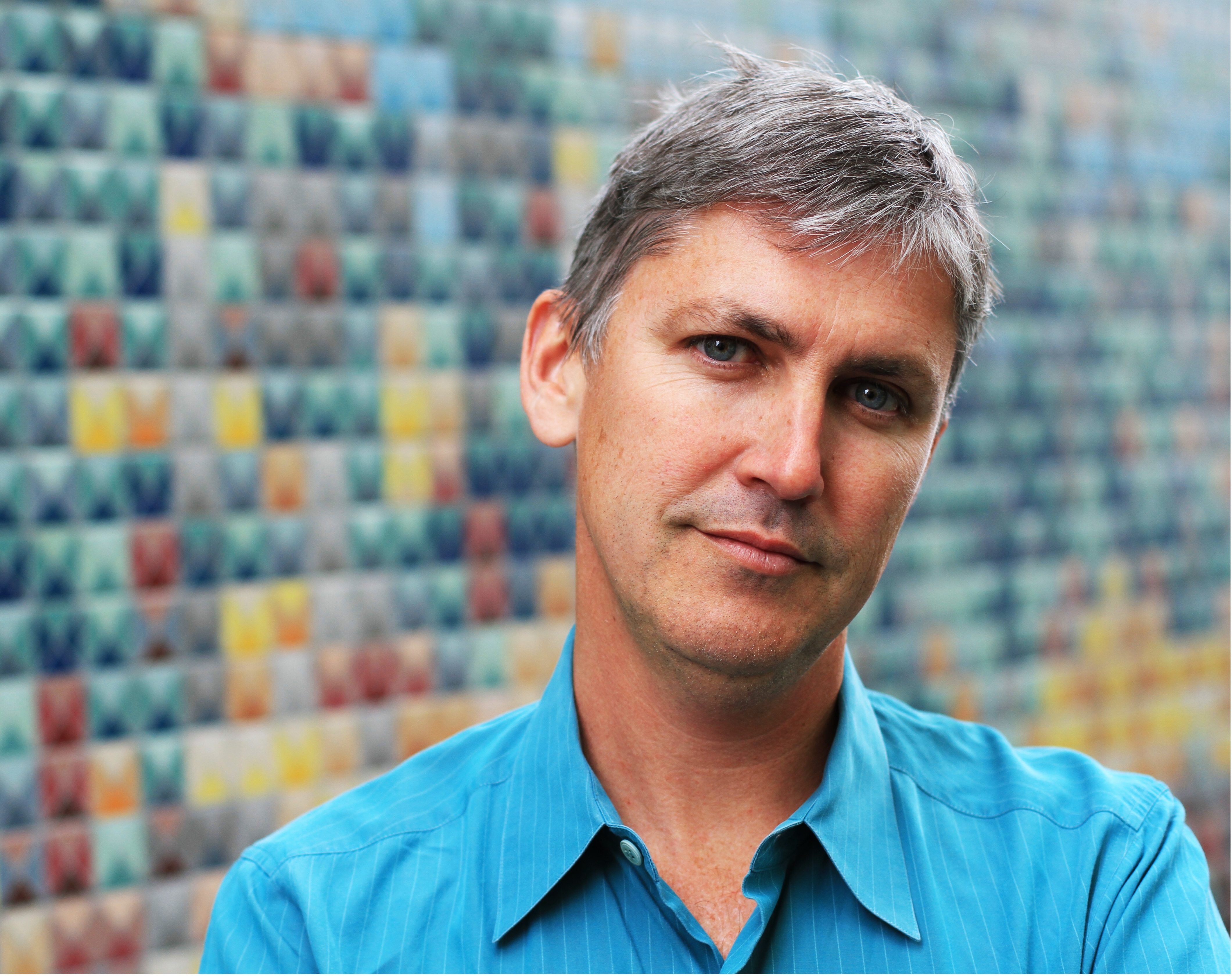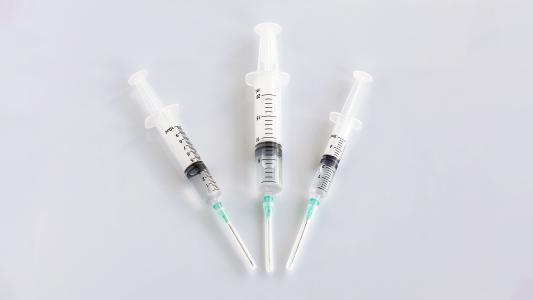Up until COVID-19 hit, many of us—especially in industrialized nations—assumed that we were relatively safe from deadly contagions. But as we now know, this is simply not true: As of this writing, there have been nearly 4 million global deaths due to the pandemic.
As Steven Johnson stresses in his latest book: Extra Life: A Short History of Living Longer, recent events are a wake up call that we are vulnerable. But recent history is proof that technology and innovation efforts have greatly lengthened lifespans, globally — something we too-often take for granted.
Johnson is the host of PBS’s How We Got To Now, and the author of several popular science and technology titles. His new book (also a four-part series on PBS) is a 200 year history of our current moment; how all of the advancements that we now take for granted came to be.

He tells Freethink that his biggest discovery in writing the book was a “negative surprise”— for a long time, medicine wasn’t really a driver of improving health outcomes — the most impactful innovations on health were clean drinking water by chlorination, basic sanitation, and soap.
“Other than vaccines, medical drugs—like going to the doctor to get a treatment or going to the pharmacy to pick up some pills—didn’t really happen until the invention of antibiotics in the mid-1940s,” says Johnson. “The idea of taking a pill and getting better is actually a very recent invention.” I spoke to Johnson about the life-expectancy gap between different populations, the anti-Vaxxer movement, and other topics.
Here is our conversation, edited and condensed for clarity.
Humans today are expected to live twice as long as our relatives 100 years ago. Why is life expectancy at birth such an important measure of how well a society is doing?
Well, it doesn’t capture everything, but it is a pretty powerful number in that it captures the basic sense of how far away from death you are in your daily existence. How much time do you have to be alive and in the world? It also measures, implicitly, the likelihood that your children will die before reaching adulthood. What is the chance you will get to meet your grandkids or your great grandkids? And it’s a proxy for other factors as well. As that number improves, people are living healthier lives, in general.
“The idea of taking a pill and getting better is actually a very recent invention.”
Steven Johnson, author
There’s this distinction we sometimes make between lifespan and healthspan. Lifespan is how long you live, healthspan is how long you live being fundamentally healthy. Those two numbers are rarely the same. But as lifespan increases, healthspan often increases along with it. It’s often a measure of affluence and access to medical care and basic sanitation and all these other properties of a society that’s working well.
The Spanish flu, which happened a century ago, was one of the first times when life expectancy dipped back down. If we compare this to COVID-19, what are the big parallels? COVID-19 has only killed 1%, as many people as the Spanish flu did, right?
At the time of writing, I think COVID had killed around 3 million people. One difference between now and then is we have much more precise numbers, but they think somewhere between 50 million and a 100 million people died of Spanish flu, and there were roughly 2 billion people on the planet at that point. Now there’s almost 8 billion — so, four times as many people. And let’s say there ends up being 5 million people dead from it, so that’s a 10th of the likely body counts from the Spanish flu.
So what are the big lessons from that pandemic? And with the new variants, do you expect that something like that could happen in the future?
What was really terrifying about the great influenza is in addition to how many people died, it killed a huge number of 25 year olds. So in terms of the overall life lost, there were many years of life lost, in addition to actual lives lost. It was much more severe than COVID, which obviously is much more concentrated in the elderly population. And that just happens to be a property of COVID versus the H1N1 virus. There’s no reason why we couldn’t potentially have another flu type virus that spreads around the world that kills young children and young adults the way the Spanish flu did.
There was a sense before COVID came that these things would emerge overseas in China, and we would have brief scares here in the United States or in Europe, but they really didn’t end up coming over here in any real serious way. Now we know that we’re vulnerable to them and hopefully we’ll react a little quicker next time around.
What about life expectancy among different populations? In the 1950s, the gap was large — life expectancy was 25 years old in the poor countries and 70 years old in the wealthier countries. Over the last 30 years that gap has been narrowing.
It’s an important part of the story. There’s two things that are happening with life expectancy over the last 200 years.
The overall average starts going up in a sustained way for the first time ever. But at the same time, a gap opens up, lifespan inequality becomes a thing.
China has almost entirely caught up to the United States, where there used to be a 30-year gap in lifespan.
If you go back to 1700, you could have all the material advantages in the world, but your health was not any better than someone who had nothing. But what we started to see first in Europe and then between Europe and the rest of the world, and then inside of Europe is these health inequalities emerge. And globally, they probably hit the worst point right around 1958, where you had some countries living average life expectancy into the 70s and then you had places like India, where it was still trapped in kind of 25 or 30. So, you had upwards of almost a 50-year gap between the healthiest countries in the world and the least healthy countries in the world — and that has narrowed dramatically.
It’s really been an extraordinary story in the last 30 years. India, now, has an average life expectancy of about 69. So, they’ve improved their conditions at just extraordinary speed. China’s even more. China has almost entirely caught up to the United States, where there used to be a 30-year gap there.
But wealth inequality is increasing inside of affluent countries like the United States. That gap has widened dramatically. But in terms of overall affluence, comparing different nations, the gap between the wealthiest countries and the poorest countries has actually narrowed over the last 30 years.
What about more recent plagues on our population — such as the opioid epidemic and deaths of despair? Life expectancy is actually going down again, right?
Yeah, it’s a great question. So basically, in the United States life expectancy has ticked downwards for three years before COVID, and that was the first time it had gone down for more than one brief year for basically a century. It had been pretty much marching up consistently over that entire period, and it’s going to go down even further because of COVID. We don’t totally know the numbers yet for 2020 and obviously for 2021, but we’re going to have four straight years of decline and maybe five straight years of decline.
It’s a really important reminder that these technological advancements are not inevitable. We can’t assume that this march of progress is going to continue on its own. It doesn’t have its own internal momentum. Every phase of society, new problems emerge; and in the United States, I think in part because of income equality, we have a bunch of folks who were suffering from these deaths of despair, whether it’s suicide or opioid. Then obviously we have COVID.
It’s a really important reminder that these technological advancements are not inevitable. We can’t assume that this march of progress is going to continue on its own.
So, just like the Victorians had to figure out how to solve the problem of contaminated drinking water to keep their big cities safe and reduce childhood mortality, we’re going to have to continue solving these kinds of problems if we want life expectancy to continue growing.
What do you make of the story of how the COVID vaccines have been developed and distributed, just looking at the top-down efforts? Is it reaching everyone equally?
From the long view, I think we’re going to say that in terms of the history of health and medicine, the development of the vaccines during COVID was an absolutely miraculous breakthrough. That we were able to develop them so quickly and with such efficacy is just an extraordinary thing. That’s a great super power we didn’t have before in terms of inventing a vaccine for a newly identified organism. Now we have it, and that’s going to protect us a lot in the future.
The story of smallpox eradication is so important—it’s a reminder that we can do those massive global collaborative efforts and we can just wipe a virus off the face of the earth.
Steven johnson, author
I’m in New York, and COVID has plummeted here—you can see it working. But as your question implies, it’s a global problem; and you can’t solve the pandemic on a national level. So, it needs to be a priority for the United States, not just for humanitarian reasons, but also for selfish reasons that we get the world vaccinated.
Because the longer we wait, one, the more people die, and two, the more evolutionary time there is for the virus to evolve new variants that might potentially not be controlled by the vaccines. So, that’s one of the reasons why the story of smallpox eradication is so important—it’s a reminder that we can do those massive global collaborative efforts and we can just wipe a virus off the face of the earth. That should inspire us to try and do a similar thing with COVID.
What kind of effects could climate change have on life expectancy?
In a strange, paradoxical way, climate change is partially a product of the success and extending life expectancy, that the population grew from two to 8 billion, not because people were having more babies, but because people were living longer and not dying in childhood. So we wouldn’t have climate change as a problem if the population had stayed at 2 billion. There just wouldn’t be enough people, even if they all industrialized, to really make a dent in the carbon levels and atmosphere. So in a weird way, climate change itself is the problem created by the combination of industrialization and the extension of life.
So again, no change this momentous is ever purely positive in its effects.
In terms of the threat that climate change poses, we’ve made a massive amount of progress in getting people fed. It’s amazing that we’ve reduced the burden of famine in a really extraordinary way, particularly over the last 30 years, even though the population has grown at such an extraordinary rate—but climate change is a real threat to that, right? You have whole areas that are going to be too hot to grow crops, potentially. And you’re going to have massive dislocation, with the people no longer being able to live on. So much of human settlement on the planet is coastal and if those areas start to flood, you’re going to have people dislocated, you’re going to disrupt the entire food chain. There are a lot of potential shocks to the system that will have health implications if we don’t stabilize our carbon emissions.
Another challenge today is that we have this loss of trust in our institutions—which includes media and government—which has fueled the anti-vaxxer movement. How big of a problem is this? If some people continue to resist these kinds of public health efforts, how can we fight the virus at a global level?
It’s a really challenging issue, and I don’t know the answer to it—other than to say that that’s a big reason why I wrote this book. We forget how dangerous and deadly life was just a hundred years ago and we forget that two out of five of your children would die before they reached adulthood and we forget that you could drink a glass of water in a big city and be dead of cholera in 48 hours. We forgot all these things that used to be such terrible presences in our lives that were solved and eliminated by public health authorities and vaccines and medical breakthroughs. This is why this stuff should be taught. It will show up every now and then in a history survey, “Well, then they have the germ theory, and then they invented penicillin and then… Now let’s get back to the story of World War II.”
But it actually has a much bigger effect on your day-to-day life—the great reduction of mortality around us—and so if we knew that history a little bit better and really had the ability to step back and say, “look at all the progress we’ve made, and look at how much we are the beneficiaries of that progress,” I think we would be more inclined to trust those public health authorities and those institutions.
I’m just trying to chip away at that distrust, in my small way.






